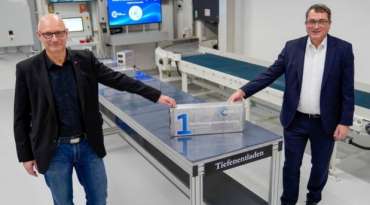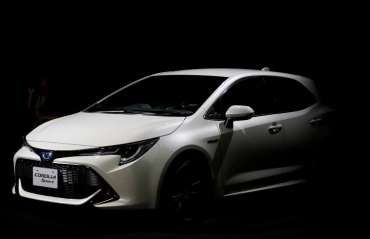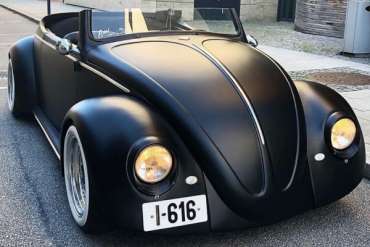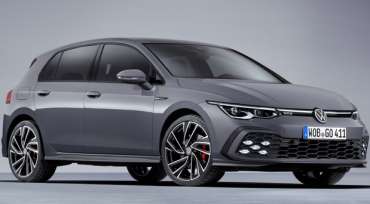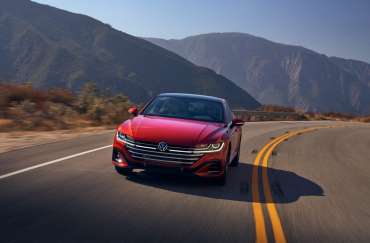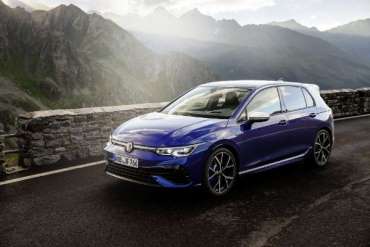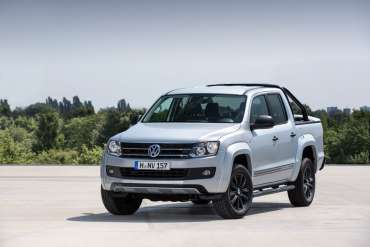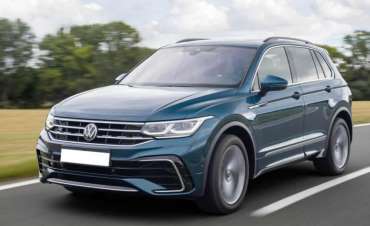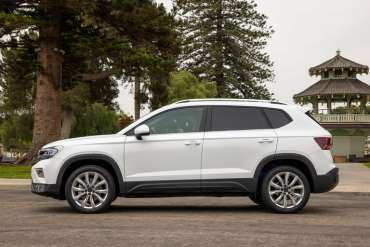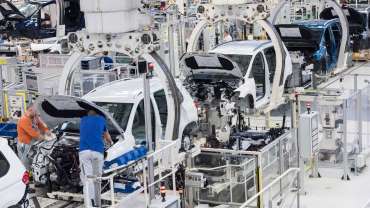Displaying items by tag: Volkswagen
Volkswagen has opened a plant for recycling car batteries
Volkswagen's Group Components division has opened its first plant to deal exclusively with car battery recycling.
The plant is located in the German city of Salzgitter and has started a recycling pilot project. The goal of the project is to take old lithium-ion batteries used in cars and extract useful raw materials such as lithium, nickel, manganese and cobalt, and to extract aluminum, copper and plastic. In this way, in the ideal scenario, up to 90% of all battery components could be recycled.
Only car batteries that can no longer be used for any other purpose will be recycled in this plant. Namely, during this kind of ecological care, an analysis will be conducted. It will show whether the used battery is still capable of providing enough voltage for its "second life" in long-term energy storage systems, mobile vehicle charging stations and the like. If the analysis shows that the battery is no longer suitable for that, it will be sent for recycling to Salzgitter.
For now, as part of the pilot project, it is possible to recycle up to 3,600 batteries from electric cars a year in this plant. As e-vehicles gain in representation, so will the recycling drive, designed so that its capacity can be increased. Only by the end of this decade, they say from Volkswagen, will the recycling of batteries be carried out in significant quantities here.
What is important for this process is that it is in line with the environmental goals of the Volkswagen Group. VW plans to thoroughly discharge the batteries in the recycling process and disassemble them into their component parts. They are then ground into granules and dried, resulting in the so-called. "black powder" - composed of lithium, nickel, manganese, cobalt and graphite. These elements are separated from the powder by chemical hydrometallurgical processes, dissolution in water and chemicals, which will be carried out by several partners for Volkswagen.
In the end, raw materials for the production of new battery cathodes will be obtained from valuable materials from old batteries. VW calculates that by using recycled materials and renewable energy sources when making a new average car battery, with a capacity of 62 kWh, it will save 1.3 tons of CO2 that will not end up in the atmosphere.
Author: SEEbiz / Bug.hr
Toyota sold the most cars in 2020, overtaking Volkswagen
Toyota sold the most cars in 2020 and overtook Volkswagen from the first place in the world ranking list, it was announced at the headquarters of the Japanese company in Tokyo.
Last year, Toyota sold 9.528 million cars worldwide, which is 11.3 percent less than in 2019, but it still overtook Volkswagen, because the German manufacturer sold 9.305 million cars, which is a drop of 15.2 percent, Reuters reported.
Last year, due to the coronavirus pandemic, sales of new cars were significantly reduced in all countries, and Toyota coped with it somewhat better because Asia coped much better with the pandemic than Europe and especially the United States.
Toyota states that they achieved better results than the competition, partly due to the larger offer of increasingly sought-after electric cars. Of the 9.528 million vehicles sold in 2020, 23 percent were electric, which is three percent more than in 2019.
An interesting restoration of the classic "Beetle" from 1961
When we think of the beetle models from the sixties, we mostly get a picture of small bright cars with a retro vibe, in a wide range of pastel tones ...
However, one designer and fan of the Volkswagen Beetle car, Danny Kordal, gave his special model "Beetle" a very interesting transformation by turning it into a James Bond car, or something that belongs to the Batman franchise.
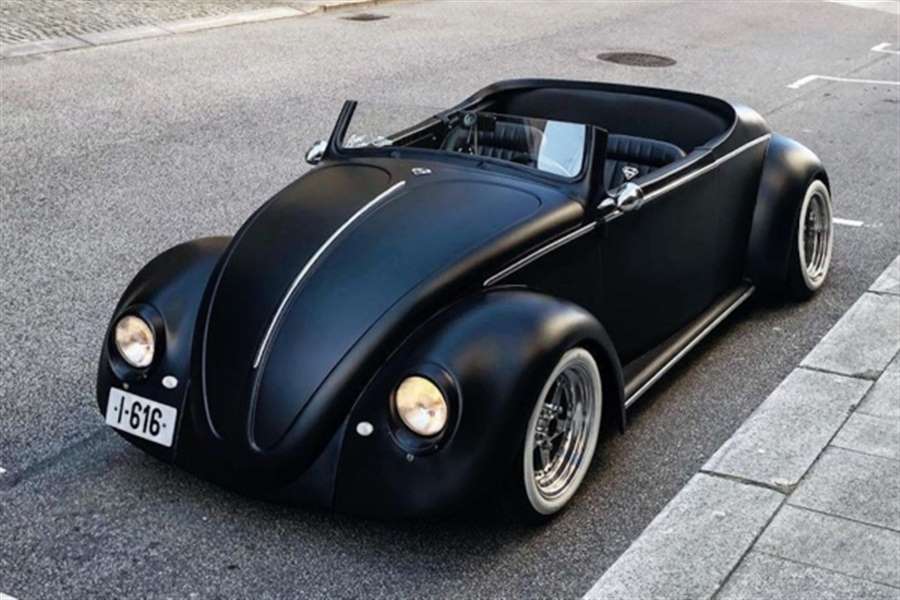
The 1961 model is painted matte black and has a flexible roof construction, which turns it into an open convertible. Kordal tuned the windshield as well, to complete his minimalist design. By removing the round lines of the car, including the side windows, together with the rear windshield, the owner created a slightly more square appearance of his torpedo-like bug.
Additionally, this beetle was lowered to the height of a standard hot rod model, followed by chrome details on each side in an outstanding combination. Even the interior of this model has been completely redesigned and finished with rich black, luxurious tonal leather seats and essential details.
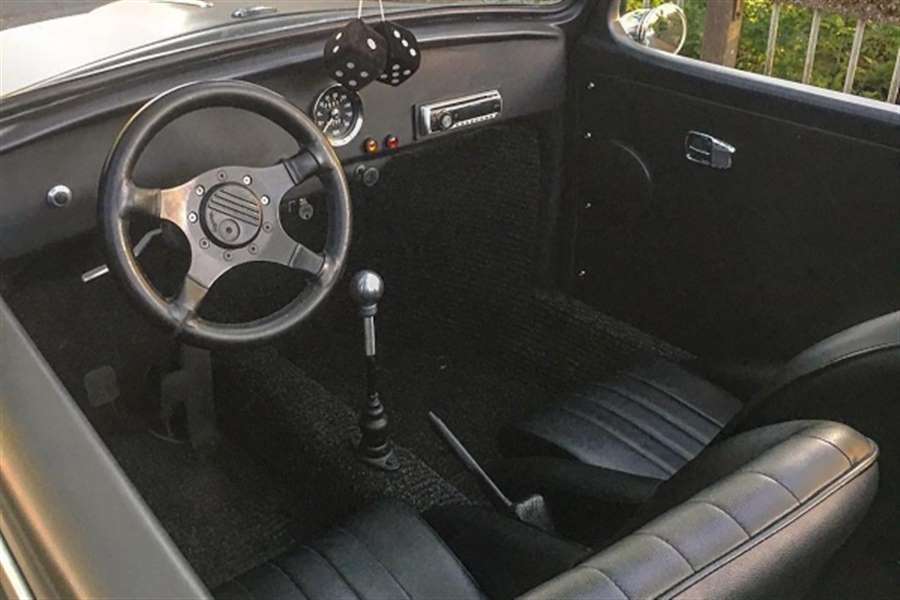
Whether driving around the city or simply traveling on the open roads of rural areas, this vehicle attracts great interest of everyone who happens to be next to it, and with its unique and powerful appearance it leaves a very strong impression wherever it appears.
The Volkswagen Golf 8 is the best-selling car in Europe
Last year, the Volkswagen Golf was again the best-selling car in Europe with around 312,000 units sold. Also, the Golf 8 was chosen as the best car in Germany by Auto Motor und Sport, Auto Bild and Auto Zeitung.
After its introduction at the end of 2019, the Volkswagen Golf 8, despite the corona virus pandemic, took first place in car sales in Europe and Germany. In 2020, more than 312,000 units were sold on the European market, and 134,000 in Germany.
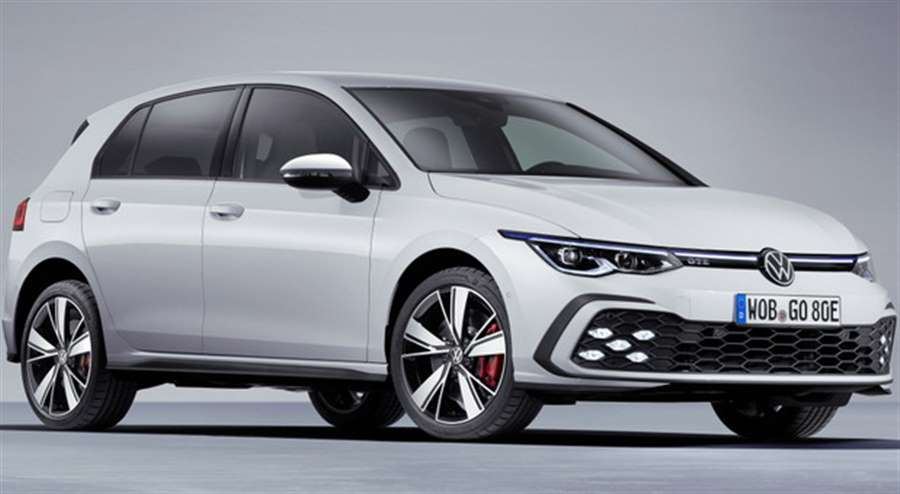
The Golf 8 has been available in all major versions since its introduction, along with the GTI, GTD and GTE models which has given it a special wind in the back. High demand for hybrid models has also contributed to this success. That’s why by the end of the year, every third Golf sold was a hybrid.
In Germany, the new Golf 8 has been named the best car in the compact class. He defeated 16 opponents in tests conducted by Auto Motor und Sport, Auto Bild and Auto Zeitung.
Tested: 2021 Volkswagen Arteon Doubles Down on Design
Interior and exterior updates make VW's flagship Arteon hatchback look even more like an upscale Audi but do little to invigorate its road manners.
The 2021 Arteon is by far the most beautiful machine in Volkswagen's portfolio. Its long, low, and wide proportions convey the type of elegance typically reserved for models wearing Audi's famous interlocking rings rather than VW's humbler logo. It's far more like the sultry A5 Sportback than the generic Passat.
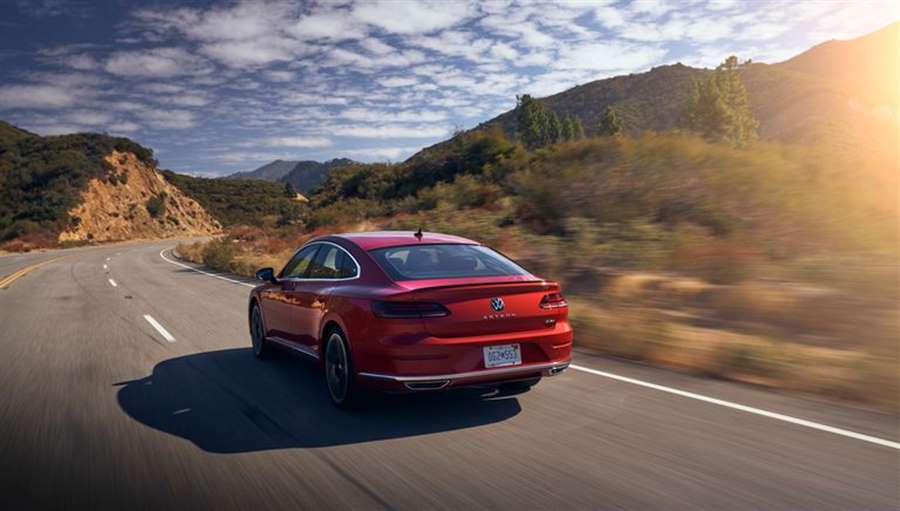
Despite its avant-garde aesthetic and luxury-grade amenities, Volkswagen's sleekest hatchback (cleverly disguised as a fast-roofline sedan) isn't a big seller in the United States. Since arriving as a 2019 model, just more than 5000 copies found buyers through the third quarter of 2020. But the Arteon wasn't built for mass appeal. VW has an expanding roster of crossovers to satisfy the masses and protect its profit margins. Instead, the Arteon was made even prettier and more desirable for the 2021 model year, to continue to entice individualists who appreciate its Audi-adjacent style.
Under the Influence of Audi
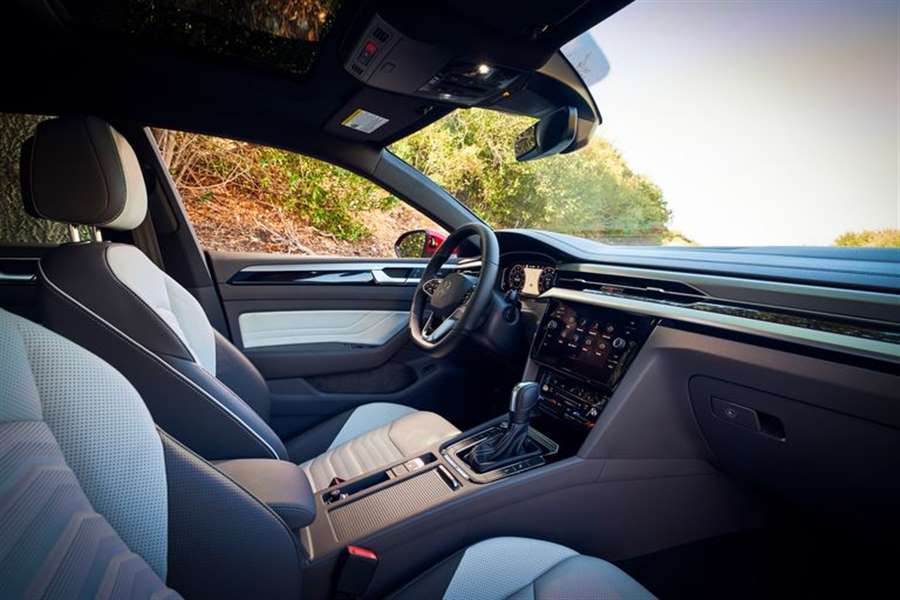
We tested a top-of-the-line Arteon SEL Premium R-Line painted in Pyrite Silver that rode on a set of newly designed 20-inch wheels. The cabin gets a more dramatic update than the exterior, with VW adding some tasteful visual flair. The upper part of the dashboard now has a modernized design that scraps the pointless analog clock and relocates the buttons above the infotainment system to the bezel around the shifter. The cabin also looks great at night, the new ambient lighting featuring 30 selectable colors that highlight a strip across the dash, translucent panels on the doors, and even elements in the fully digital gauge cluster and 8.0-inch touchscreen. We're also fond of the new steering wheel's contoured grip and girthier rim, but our winter gloves unintentionally activated its new haptic controls more than once. Other Audi-influenced additions include standard touch-sensitive climate controls that were less distracting and more responsive than we expected.
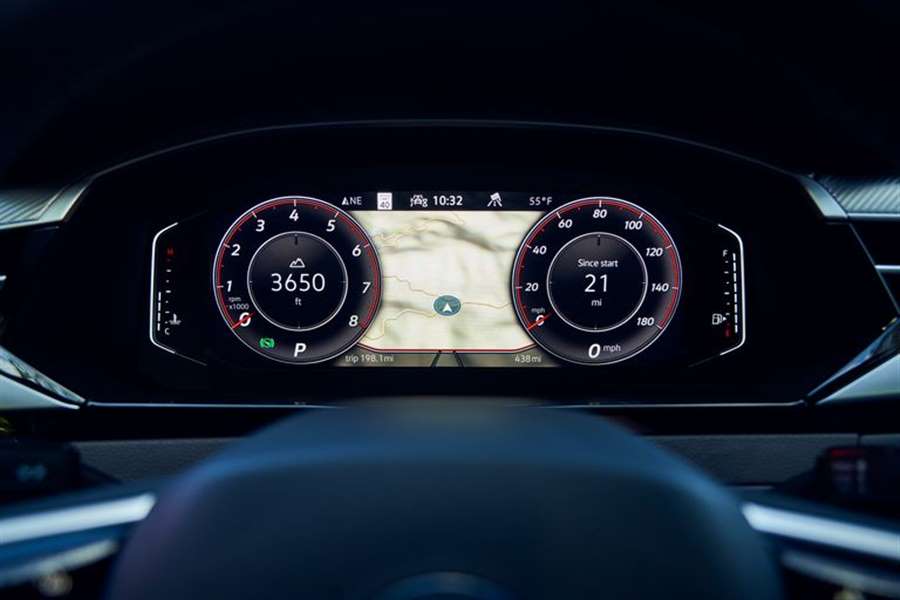
HIGHS: Simply stunning styling, Audi-esque interior environment, crossover-like cargo space.
The raft of subtle, albeit meaningful, changes don't affect the Arteon's cargo or passenger space. The pilot's seat remains more relaxing than engaging, with front-seat cushions that err on the side of supple rather than supportive. Too bad the "massaging" driver's seat felt like sitting in front of a disgruntled toddler on an airplane. At least adults in the back still enjoy legroom worthy of a luxury car and a surprising amount of headroom despite the hatchback's diving rear roofline. The Arteon is almost as practical as a compact crossover, too, with an expansive cargo area that'll hold nine carry-on suitcases behind the back seat. Fold them down and luggage capacity tops out at 21 carry-ons—only three fewer than we fit in a VW Tiguan.
A Fine Luxury Car—for the Right Price
Those satisfied with the Arteon's one-size-fits-all powertrain—a 268-hp turbo 2.0-liter four-pot paired with an eight-speed automatic—won't care that it's unchanged. Those hoping we'd get the 315-hp version from the European Arteon R are out of luck. However, the EPA highway fuel-economy figure has swelled by 4 mpg to 31 since 2019, a figure we matched during our real-world highway test at 75 mph. Every top-trim SEL Premium has standard 4Motion all-wheel drive, which helped our test car reach 60 mph in 6.4 seconds. While neither that time nor the 4.6-second sprint from 50 to 70 mph qualifies as lazy, the Arteon isn't exactly exciting when goaded with wide-open throttle. The interior is nicely insulated from wind and road noise, but a heavy right foot reveals engine sounds that aren't racy. The automatic has polite manners and deliberate responses, but its tendency to upshift early favors fuel economy over playfulness, making the steering-wheel-mounted paddle shifters necessary.
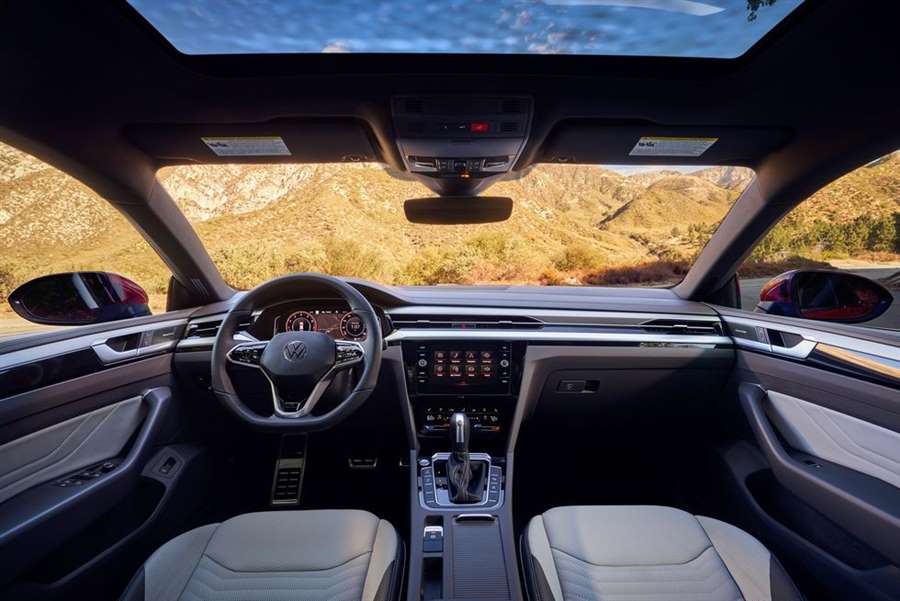
LOWS: Unexhilarating engine sounds, massaging driver's seat feels like being kicked by a toddler, barely cheaper than an Audi alternative.
During our time with the Arteon, we discovered that it's best enjoyed at a relaxed pace. Sure, the hatchback can be hurried if you insist, but it's a luxury car first. Its light steering is accurate and body control is poised, but the Arteon is mostly indifferent to corners. The hatch's surprisingly rigid structure and graceful ride quality remind us that VW is really good at building cars that feel expensive. Which is fortunate, because this one actually is.
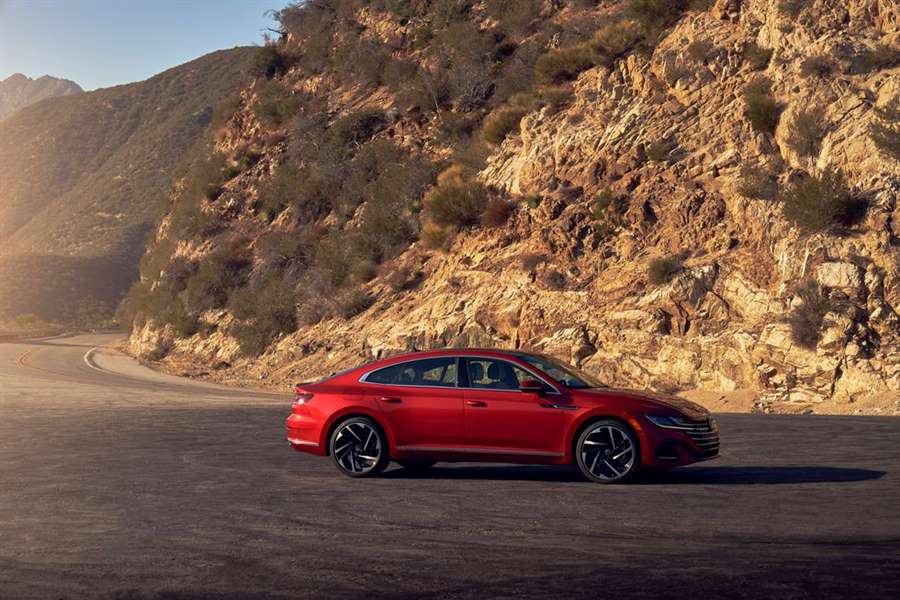
Although the Arteon is certainly a special Volkswagen and a fine mid-size luxury car, it's not really an affordable Audi alternative because, well, it's not much more affordable. Our SEL Premium R-Line had an as-tested price of $48,190, which is only $1755 shy of a loaded A5 Sportback. In a way, the Arteon is the last throwback to the Piëch-era VWs, the Phaetons and Touaregs, that sought to transcend their badges. And that it does, rewarding the select few who are paying attention.
Source: caranddriver.co.uk
Golf R 2022 Presented
The Volkswagen Group has introduced a new sports iteration of the popular model ...
We start with the powertrain, because that’s what VW has been working on the most. The 2022 Golf R has a turbo 2.0-liter four-cylinder engine that produces 315 hp and 420 Nm of torque. That’s an increase of 27 hp and 41 Nm, which doesn’t sound like much, but it means a lot in terms of acceleration and performance.
In the United States and Canada, the engine will be paired with a standard six-speed manual transmission while the European version will be offered exclusively with the DSG. Regardless of the selected transmission, all models will be equipped with an all-wheel drive system.
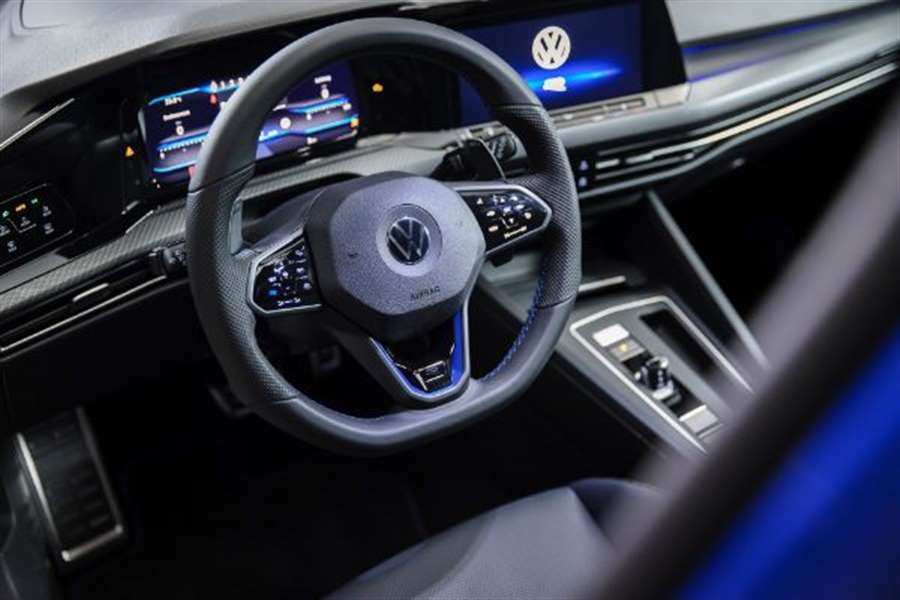
The Golf R can accelerate from 0-100 km / h in 4.7 seconds and reach a top speed of 250 km / h.
Sporty features extend beyond the engine compartment as well, as the Golf R has a sporty tuned trap with stiffer springs and protective bars. Engineers also added a lightweight aluminum subframe and increased the negative cam on the front axle to allow for higher cornering speeds as well as greater stability. The changes also improve the look of the car as the Golf R stands 20mm lower than the standard model.
In addition to the above-mentioned changes, the model has a modified adaptive damping system, electronic differential locks and a variable ratio control system. Drivers can also choose from six different driving modes, including Comfort, Sport, Race and Individual.
They were joined by two new settings called Special and Drift. Special mode is optimized and has softer damping settings than Race mode to "maintain maximum contact with the road". This helps the car deal with "wavy surfaces" on the road.
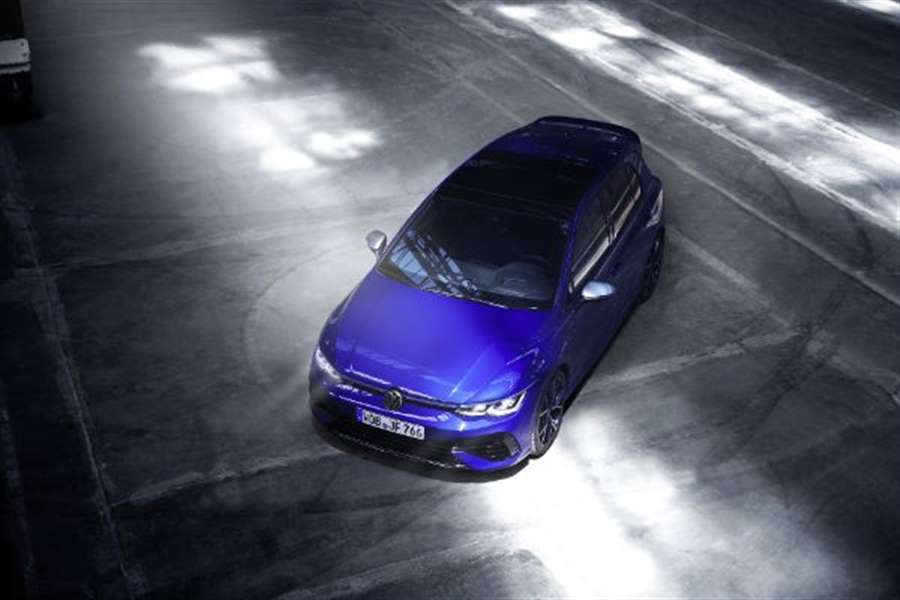
Leaving aside the performance characteristics, the Golf R has a sporty front bumper with unique air intakes and glossy black accents. The model also features a unique grille with a blue crossbar that glows as soon as the engine starts.
There are also sports side panels, matte chrome exterior mirror covers and 19-inch aluminum wheels wrapped in high-performance summer tires.
In the interior, customers will find Nappa leather sports seats with blue accents and R logos on the backs. The designers also gave the model an artificial carbon fiber lining, stainless steel pedal covers and a multifunctional sports steering wheel. Other beauties include a digital instrument panel and a 10-inch entertainment system.
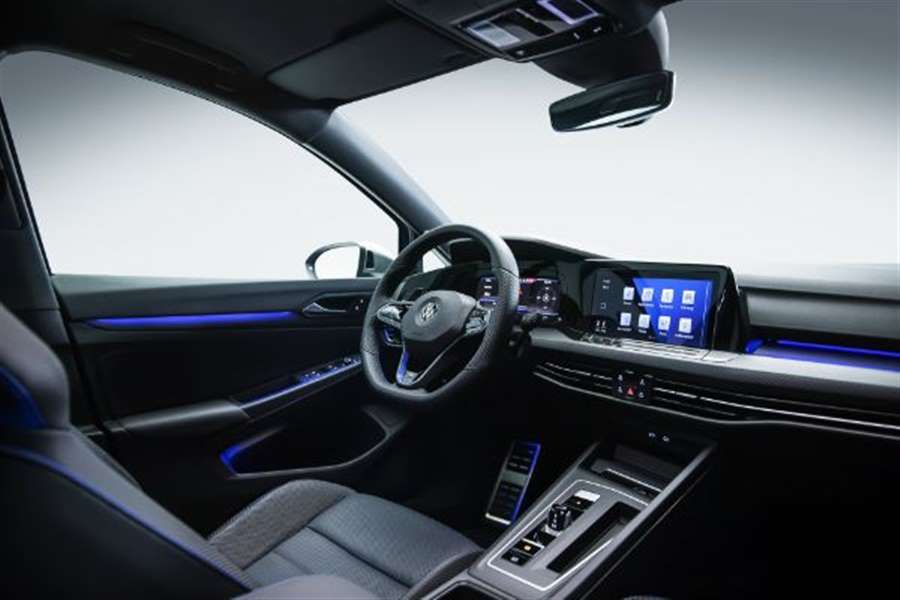
Volkswagen Amarok Still Impresses from Afar
While VW's next Amarok pickup will be based on the Ford Ranger and may possibly come to the United States, it's a shame the current truck never made the trip.
A few years ago, we asked a Volkswagen executive why the Amarok pickup truck wasn't offered in the United States, where pickups are a default mode of personal transportation. His answer: It's too good and, therefore, too expensive. He added that if VW had partnered with one of the established truck manufacturers, it could be a different story.
In the United Kingdom, the Amarok's base price was about $35,000 before taxes and destination charges, stretching to around $52,500 for a top-of-the-line Aventura model with the most powerful engine. You can see how that would be a tough ask in the U.S., where a Chevrolet Colorado ZR2 costs less than $45,000.
The Amarok's premium price reflects the ambitions of former CEO Ferdinand Piëch, who commissioned the project to get VW into the mid-size pickup market. Typical of mid-2000s Volkswagen, the company chose the most difficult path, designing the Amarok from scratch. Now, a decade after its introduction, the Amarok has reached the end of its life cycle as the remaining stock in the European market dwindles. The factory where it's built, in Hanover, is switching over to produce the new Multivan and electric ID. Buzz, and import tariffs make it prohibitively expensive to import the Amarok from VW's plant in Argentina. The Amarok will continue to be built and sold in South America, though, for a few more years.
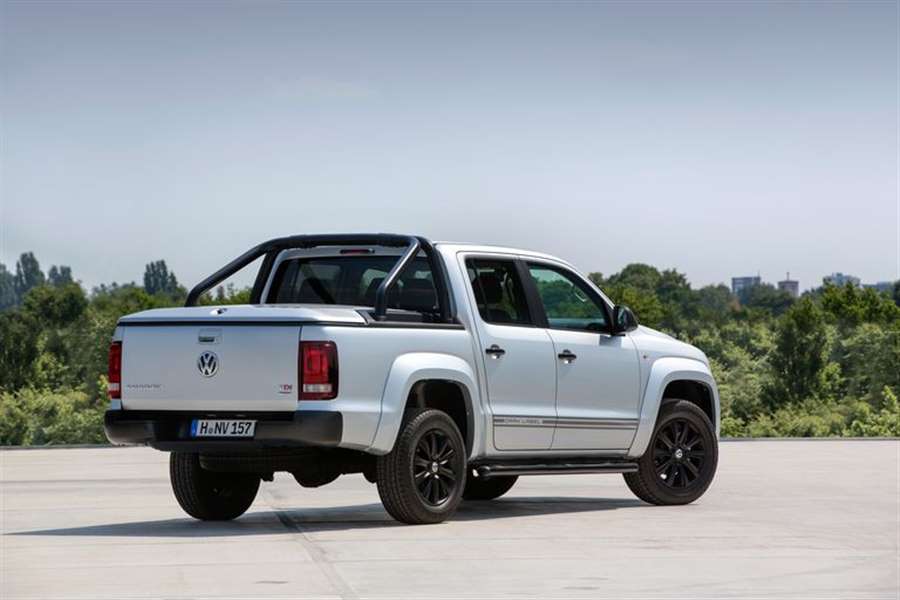
Depending on the market, the Amarok is powered by four-cylinder gasoline and diesel engines or by an Audi-designed turbocharged diesel V-6. It's available in rear- or all-wheel drive and as a single cab or a four-door crew cab. We drove a top-level version, an Amarok Dark Label special-edition crew cab, with all-wheel drive and a 201-hp 3.0-liter diesel V-6 mated to an eight-speed automatic transmission.
Ten years after its debut, the Amarok is still well-proportioned and pleasantly subdued in appearance—unless it's specified with Dark Label trim. Riding higher than a regular Amarok, the Dark Label is fitted with a roof-mounted LED light bar and a snorkel, standing tall above European traffic.
Once you've climbed up into the cabin, the Amarok feels familiar. Straight, clean lines reflect the design language that was en vogue in Wolfsburg circa 2010. The buttons and switches feel thick and provide satisfying feedback. And the materials, while not quite Audi grade, are better than you'd expect in a mid-size truck. The touch-sensitive navigation screen is a bit small by today's standards, but it includes seamless connectivity.
The turbo diesel that made its debut in the 2014 Audi A6 and A7 assumes its duty with a quiet, reassuring purr. The torque-rich 3.0-liter is familiar from other Volkswagen Automotive Group vehicles, including performance and luxury cars. And while this one is in a mild state of tune, a diesel V-6 is unusual in this segment, where most competitors deem a gasoline-fed turbo-four or large-displacement V-6 to be entirely sufficient. This engine's potential was demonstrated by the 2019 Amarok Red Rock concept, which cranked out 350 horsepower but never made it to production.
The Dark Label's 201-hp rating translates into a claimed zero-to-60-mph time in the 9.0-second range and a terminal velocity approaching 120 mph. The most powerful Amaroks offer 255 horsepower and top out at a claimed 129 mph, which would make them the fastest pickups in the U.S. The version we drove serves up maximum torque of 369 pound-feet from 1250 to 2750 rpm. While the engine's growl remains subdued even under high loads, the snorkel system emits a delicious hiss that can be modulated with the throttle and reliably manages to turn heads while prowling the city.
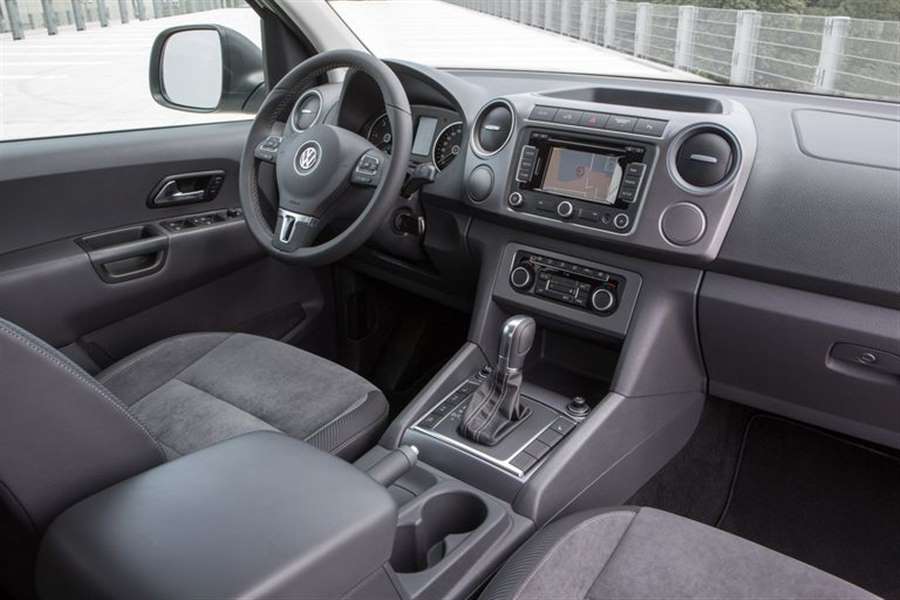
The single-turbo V-6 operates with surprisingly little turbo lag, and the bountiful torque means that the Amarok feels quicker than its leisurely shove to 60 mph would suggest. On an empty autobahn, 110 mph is a comfortable cruising speed. We observed fuel economy in the 23-mpg range, although aggressive driving will drop that to around 17 mpg.
Piloting the Amarok at triple-digit velocities feels remarkably safe. It tracks steadily, and the low-effort steering offers ample feedback. The suspension is designed for truck stuff—hauling and towing—yet even an empty Amarok feels comfortable enough for long trips. It might not challenge the Honda Ridgeline's on-road manners, but the Amarok manages to deliver plenty of off-road capability and utility while doing a credible impression of a Piëch-era VW sedan on the highway.
In fact, with the optional aluminum tonneau cover, you can use the Amarok as a sedan that happens to have an exceptionally large trunk. That cover kept the luggage—in my case, a boxed collection of rare books—totally dry during an unexpected downpour.
Despite its refinement and capability, however, the Amarok's run is over. At least VW has promised a successor. Slated for a launch in late 2022, the next-gen Amarok will be co-developed with the Ford Ranger. It will still be called Amarok, and a diesel engine will continue to be offered. But this time around, the price should follow the trajectory of other post-Piëch projects and take a healthy drop. And this might finally make the Amarok a feasible product for the country that can't get enough pickup trucks.
Source: caranddriver.com
Volkswagen Tiguan Review
The Volkswagen Tiguan has an upmarket, spacious and practical interior, plus great engines and comfortable drive. It’s now been updated for 2020.
Is the Volkswagen Tiguan a good car?
Remember the Volkswagen Tiguan ad, with the ‘cool’ dad dropping his kid off at school? Well, the new VW Tiguan is even cooler, and it’s on sale now, priced from around £500 less than the outgoing car.
The cheapest VW Tiguan you can buy is the 130hp 1.5-litre petrol model with front-wheel drive and a six-speed manual gearbox. It costs from £24,915 and is only available in one trim level – the imaginatively named ‘Tiguan’ trim.
It comes with 17-inch alloy wheels, LED headlights, an 8.0-inch touchscreen infotainment system with wireless Android and Apple smartphone mirroring, automatic emergency braking and lane-keeping assist.
Next-up is the Tiguan Life model. This comes with a 130hp or 150hp version of the 1.5-litre petrol engine and has the option of a seven-speed automatic gearbox. You can also get a 150hp 2.0-litre diesel engine, which gets this automatic gearbox as standard.
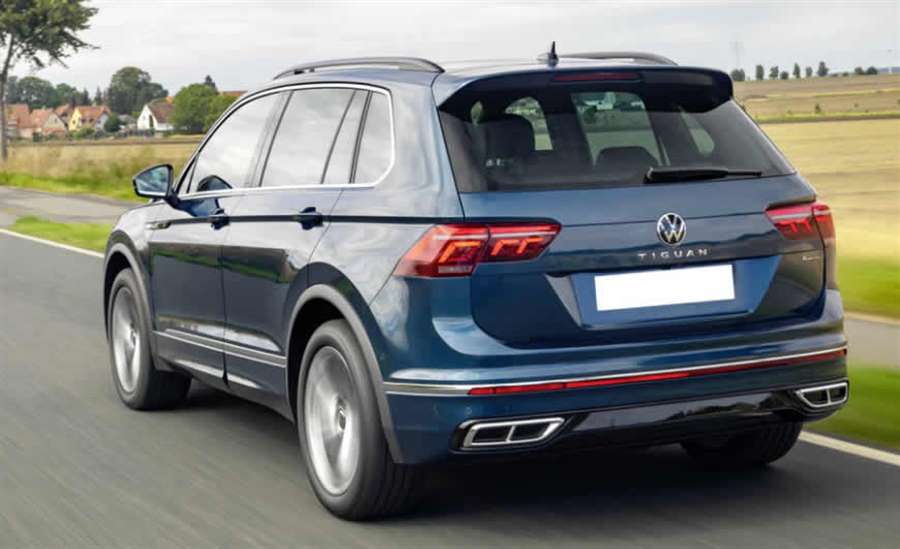
Volkswagen Tiguan, photo: carwow.co.uk
Whichever engine you pick, you get 18-inch alloy wheels, tinted rear windows, three-zone climate control and lumbar adjustment for the front seats as standard, along with front and rear parking sensors, adaptive cruise control and traffic-sign recognition. These cars cost from £26,915 for a 130hp 1.5-litre petrol engine with a manual gearbox.
Elegance cars come with 19-inch alloy wheels, Matrix LED headlights, exterior chrome trim and silver roof rails. Inside, you get 30-colour ambient lighting, heated front seats, light-up door sills, a panoramic glass roof and a 10.25-inch digital driver’s display instead of analogue dials. Elegance models cost from £32,430 for a 1.5-litre 150hp petrol-powered car with an automatic gearbox.
R-Line versions get a sporty bodykit, 20-inch alloy wheels, lowered suspension and automatic LED headlights. Inside, you get the same mood lighting and digital driver’s display as Elegance versions, but the more supportive sports seats are exclusive to R-Line cars. These cars cost from £32,730 for versions fitted with a 1.5-litre 150hp petrol engine and an automatic gearbox.
You can get both Elegance and R-Line models with a 150hp petrol, 150hp diesel or 200hp diesel engine – all of which get a seven-speed automatic gearbox as standard. The 200hp diesel-powered models come with four-wheel drive as standard, and you can pay extra to have this fitted to 150hp diesel models, too.
The previous Volkswagen Tiguan was, and still is, a big seller, so it’s no wonder VW has barely changed the exterior look for the new 2021 model. That said, the new car’s bonnet is higher and the grille has been made wider to make this Tiguan resemble the larger, more expensive Volkswagen Touareg.
High-spec cars also come with a set of new, brighter, matrix LED headlights, which can automatically adjust their beams to avoid dazzling other drivers. As an added bonus, they should never wear out or need replacing.
The bumpers at the front and rear have also been altered with some redesigned air intakes and new black plastic trim, but the new car looks almost identical to today’s Tiguan from the side – even down to the chrome strip above the side skirts and the silver badge under the wing mirror.
The Volkswagen Tiguan is hugely popular for good reason. These updates should only help to cement that.
Mat Watson, carwow expert
Volkswagen has also announced it’ll build a high-performance Tiguan R for the first time. The Tiguan R is easy to spot thanks to its pumped-up body kit and 21-inch alloy wheels. It also has a 2.0-litre 320hp turbocharged petrol engine, bigger brakes than a normal Tiguan and four tailpipes for the exhaust.
While the Tiguan R offers high-speed thrills, the new Tiguan e-hybrid is all about efficiency. It’s a plug-in hybrid (PHEV) that can drive for around 30 miles on electricity alone – enough for most morning commutes. You can drive at up to around 80mph using just the electric motor, though that will run down the batteries pretty quickly.
You can also use the engine to charge the battery while you’re driving, or drive without using the batteries and electric motor at all – so you can save their charge for later when you’re in town or stuck in traffic. It’s best to charge up using a plug, of course, which you can do overnight.
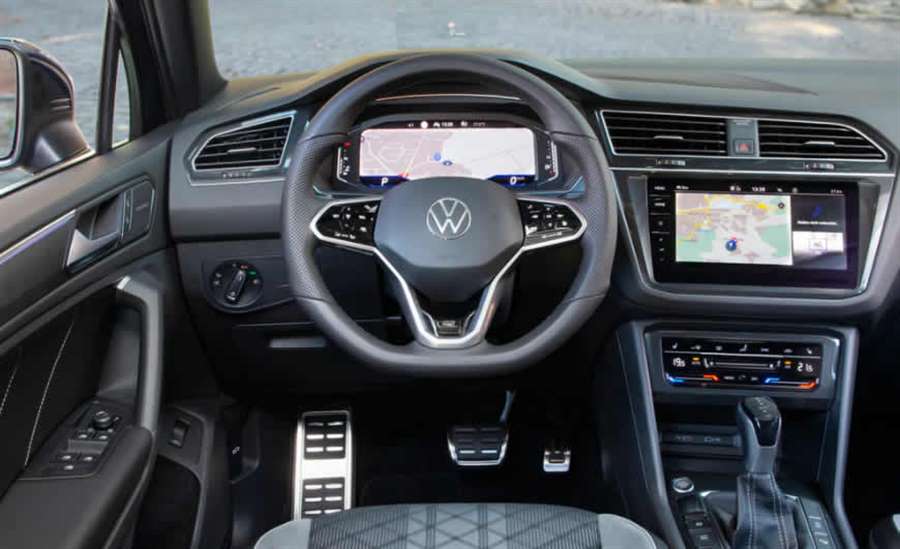
Volkswagen Tiguan, photo: carwow.co.uk
Fuel economy figures haven’t been announced but it’ll likely be a strong performer: expect official figures in the hundreds, though you will only get near that on short journeys and with regular plugging-in. The Tiguan’s total power output is 245hp so it should be pretty quick as well as efficient.
One of the biggest differences between the old and the new cars’ interiors are the climate controls. These now have touch-sensitive sliders, rather than physical buttons, that you swipe left and right to control the fan speed and temperature. There’s also a new, but optional, 10-speaker, 480 watt Harman Kardon stereo system.
The latest Tiguan comes with MIB3 – not a reference to a Men In Black sequel, but VW’s latest infotainment software that the Tiguan shares with the new Golf. Depending on the specific model you choose, this MIB3 system includes a range of internet services including map updates, internet radio and Apple Music.
It also has voice control that’s supposed to understand ordinary speech. However, that system had flaws when we tested it in the latest VW Golf.
The new Volkswagen Tiguan comes with a range of upgraded automated driving systems, including an advanced cruise control that can steer, brake and accelerate for you. VW says that to do this the driver must keep their hands on the steering wheel at all times, and it has fitted sensors and alarms that’ll warn you if you don’t.
The new Tiguan can also automatically alter the car’s speed according to local speed limits, town boundary signs, junctions and roundabouts.
We haven’t yet driven the Volkswagen Tiguan, but will post our opinions as soon as we do.
Source: carwow.co.uk
2022 Volkswagen Taos Previews an Important New Engine for VW
An early prototype drive in VW’s upcoming Taos subcompact ute reveal its new Miller-capable 1.5-liter turbo-four should enliven the low end of VW’s lineup.
Oxnard, California, is an overlooked American automotive nerve center. The city surrounds Port Hueneme, where massive car-carrying ships disgorge vehicles for at least 18 manufacturers. It's also the port from which Tesla vehicles leave for export to Asia. That's led some of the carmakers to establish engineering and design facilities in the area. BMW has one there. And now, so does Volkswagen of America—a five-acre campus on Del Norte Boulevard, across from a Shell station with an integrated Subway sandwich shop.
So, while VW was dazzling the world's assembled press in September with the all-electric ID.4 small crossover, it simultaneously invited a select group of marginalized journalists to Oxnard to tour the company's facility, sample the company's upcoming 2022 Taos—a conventionally powered compact crossover—and do a deep dive into its new 1.5-liter turbocharged, four-cylinder engine.
Nearly a foot shorter, the Taos is more compact than the Tiguan, sized to compete in the red-hot twerp-ute market, a burgeoning segment that includes the trendy Nissan Kicks, stalwart Honda HR-V, sweet Mazda CX-3, and lackluster Ford EcoSport. It's an important genre, not only because of its insane sales growth, but because cheap crossovers are often the entry point for young customers buying into a brand for the first time. And that's that for the business school marketing lesson.
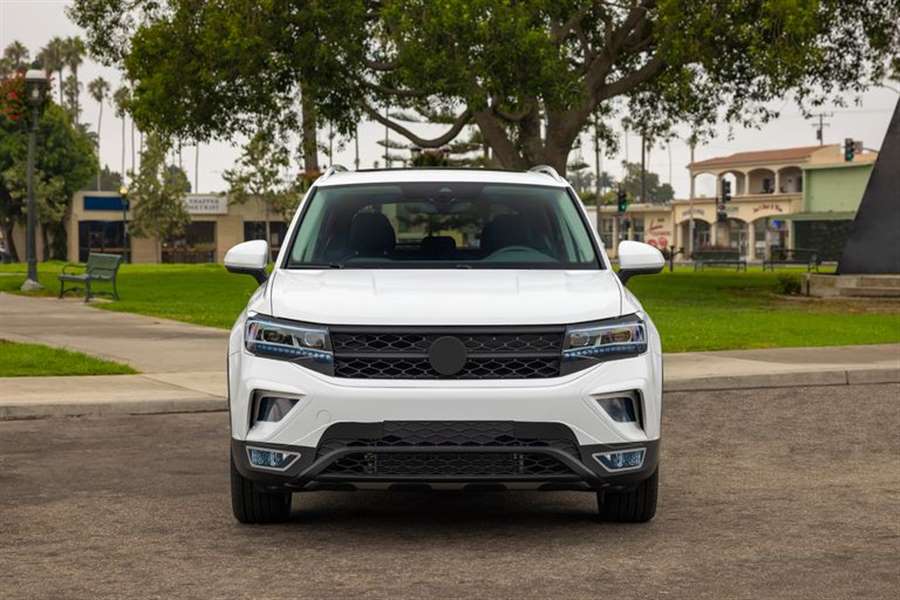
The pre-pre-production prototypes on hand were lightly camouflaged to avoid startling observers psychologically unprepared to contend with the profound visual impact of a small SUV that looks like a dehydrated Tiguan. On the outside they were wrapped in white vinyl, with subtle graphic elements taped to the headlights and covering the logos. On the inside, a fuzzy dash pad covered most everything but the tachometer and speedometer. That included the air vents, and it was a pretty hot day.
The drive itself would consist of a 30-or-so-mile lap through Oxnard and neighboring Camarillo and back to VW's campus. And during this tour of verdant, culturally diverse Ventura County, we would be shadowed by a VW representative so that if something went wrong or we tried to keep the prototype for ourselves, they could do … something. Maybe our proctor had a roll of duct tape with him. Or a shotgun. We obeyed the rules.
The featured attraction here was truly the new 1.5-liter turbo engine. It's destined to replace the 1.4-liter turbo four that's currently the standard powerplant in the United States-market Jetta and Golf. The 1.5-liter has a slight increase in piston bore diameter to reach its new displacement, but the big change is the use of some technology from the EA888 turbocharged 2.0-liter inline-four found in the Tiguan. The new engine will be capable of operating on Volkswagen's modified Miller-cycle combustion under light load conditions, which they've named the Budak cycle after its developer. When operating on Budak, the intake valve closes earlier that it would during normal operation, thus reducing the amount of fuel and oxygen drawn in and returning more efficiency. The 1.5-liter will also use a variable vane turbocharger to increase its responsiveness.
VW rates the new engine at 158 horsepower and 184 pound-feet of torque, which will be the sole engine in the Taos. That vaults right over competitors like the 141-hp Nissan Rogue Sport, 147-hp 2.0-liter Kia Soul, and 148-hp Mazda CX-3. And the VW will push that advantage by backing the engine with an eight-speed conventional automatic transmission in front-drive versions of the Taos. All-wheel-drive versions will get the familiar seven-speed dual-clutch transmission. The new 1.5-liter will be built at VW's engine plant in Silao, Mexico, which opened in 2013. And the Taos, designed for the North American market, will also be built in Mexico.
The route chosen for us by VW was flat and not curvy. There was a short blast southward on Highway 101, but no roads were challenging. There were several opportunities along the way, however, to stop and buy strawberries freshly picked from the coastal plain's fields.
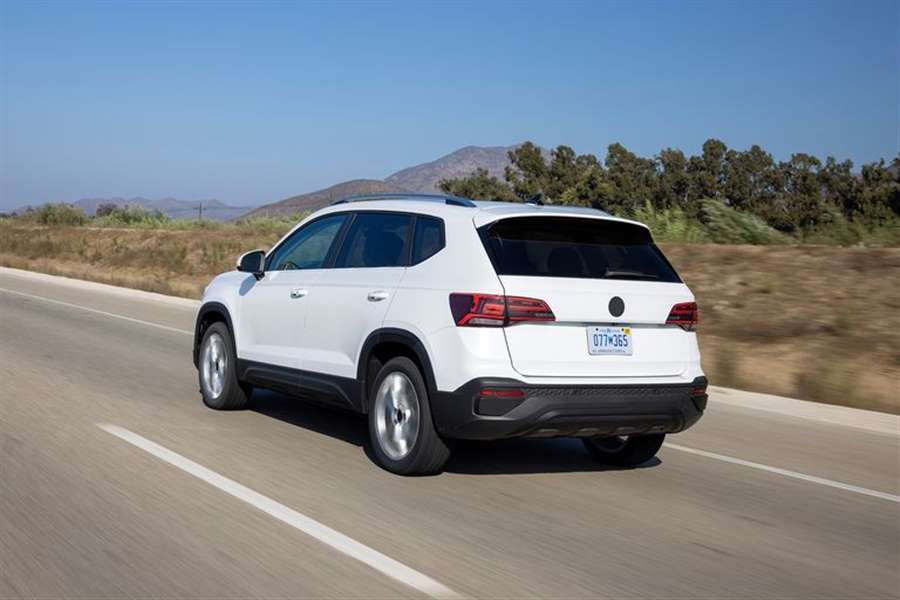
As an evaluation of the Taos, this was just a bit of early exposure, severely limited in its usefulness. But the engine does seem to make excellent low-end grunt, the transmission didn't do anything untoward, and the suspension didn't collapse riding along smooth pavement. The details that matter were covered up inside, so there's no way to positively say how well the interior is laid out. Naturally, a big-ass touchscreen is likely destined for the dashboard's center because everything now has a big-ass touchscreen.
The front wheel-drive Taos will make its official debut this month and is scheduled to hit dealerships around the middle of next year. And since it's destined to compete in one of the most price-conscious segments of the market, there's no reason to expect it to cost any more or much less than other cute-overs. So, figure it'll start at around $20,000 at the bottom and knock on $30K at the top of the range.
Back at the facility, there were Volkswagen products from around the world on hand for all sorts of testing. There were even a couple of prototype ID.4s, with technicians carefully peeling away their camouflage after that day's public debut of the car. There's something going on here.
That something is an inflection point, one where manufacturers are still developing vehicles powered by internal combustion engines while simultaneously prepping for the electrified future consumers will either want or will have forced upon them. Volkswagen was caught with its pants down in the diesel scandal and can't afford to screw up in the immediate future. So, right now it's wearing multiple pairs of pants. Jeans and chinos. Dockers and slacks. Snow pants and baggy shorts.
As the day was dying off, the assembled litter of journalists were led to a conference room set up with appropriate social distancing. There we enjoyed the comedy stylings of Johan de Nysschen, the still new senior executive of Volkswagen Group North America, who is this generation's Bob Lutz tinged with a hint of John Force. He likely said something profound and hilarious, but I really just wanted to write "comedy stylings."
It turns out that VW doesn't use Port Hueneme as a port of entry for its vehicles. So, why the company decided to plop down its latest facility in Oxnard is a mystery. Maybe it's because Oxnard is where the action is. Or maybe they just wanted to build somewhere with easy access to a Subway.
Source: caranddriver.com
Volkswagen suspend production
Volkswagen Group suspend production at plants in Italy, Portugal, Slovakia and Spain and is preparing to shut down the rest of its factories across Europe due to the spread of Coronavirus (Covid-19). VW, like Ford, FCA, and Toyota, is looking to resume some manufacturing operations wherever it can.
Volkswagen spending about $2.2 billion (about 2 billion euros) a week on fixed costs. So this year the VW group probably will have a significant loss in balance sheet.
Production will be halted at VW's Spanish plants, Setubal in Portugal, Bratislava in Slovakia and the Lamborghini and Ducati plants in Italy before the end of this week.
VW Group's powerful works council has concluded it's not possible for workers at its plants to maintain a safe distance from one another to prevent contagion and recommended a suspension of production.
VW Group, which owns the Audi, Bentley, Bugatti, Ducati, Lamborghini, Porsche, Seat and Skoda brands, said on Tuesday that the uncertainty about the fallout from the pandemic of Coronavirus (Covid-19) meant it was impossible to give any forecasts for its performance this year. Definitely, 2020 will be a very difficult year. The Corona pandemic presents us with unknown operational and financial challenges. At the same time, there are concerns about sustained economic impacts.
Only last month Volkswagen had predicted that vehicle deliveries this year would be stable at 2019 levels and forecast an operating return on sales in the range of 6.5 percent to 7.5 percent in 2020, but said this depended on external factors.
CFO Frank Witter said it is uncertain how severely or for how long the spread of coronavirus will also affect the automaker. "Currently, it is almost impossible to make a reliable forecast," he said.
VW Group said its full-year operating profit rose 22 percent to 16.9 billion euros ($18.5 billion) in 2019, thanks to strong sales of higher-margin cars and lower diesel charges, defying an industry downturn that has cut the earnings of rivals.
Earnings were driven by higher profits at its VW, Porsche, Seat and Skoda brands, and a return to profitability for Bentley.
Improvements in the mix and price positioning in particular compensated for lower sales of Volkswagen Passenger Cars models and for launch costs and negative exchange rate effects, the company said.

